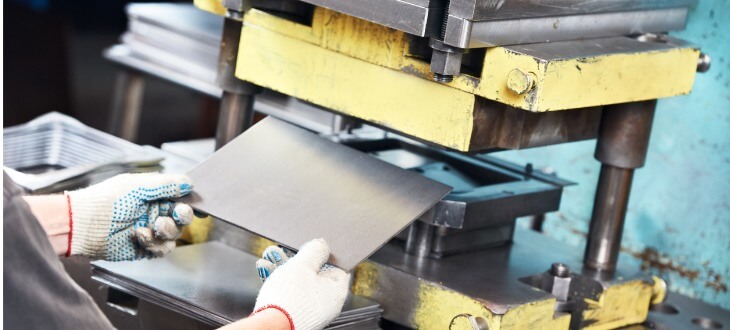There are many tools you can use to cut through metal to get the results you need. Each is different and has a unique cut that makes them stand out from the crowd. They also come with their own pros and cons to them which we’ll detail as we outline the ten best metal-cutting tools.
The 10 Best Metal Cutting Tools
1. Snips
Snips, also known as sheers, are much like scissors but for metal. Meaning you use your own force to cut through the metal. Many different types of snips can be used for a variety of projects.
Pro: Can be very powerful depending on the size and type of snips.
Con: They are typically only used to cut through thin metal sheets.
2. Metal Air Sheers
This is an upgrade from your regular snips. It packs more power to cut through bulk or long metal sheets.
Pro: It makes clean cuts through long metal sheets.
Con: Even though they cut through bulk metal, they may not be ideal for other bulk materials.
3. Angle Grinder
Angle grinders are very common in most machine shops. They have a disk attached to the end that grinds down materials or removes excess materials from an item.
Pro: The attached disk is good for cutting through many different types of material.
Con: Due to its high operational speeds, people operating this tool may become injured if they do not operate it correctly.
4. Cold Saw
This saw is similar to an angle grinder but much larger in size. A cold saw uses a cooling ingredient to cool down the metal while giving your materials a clean cut.
Pro: The blade does not wear out as quickly as other saws.
Con: It is a very expensive tool.
5. Circular Saw
If you have metal that needs a straight cut, this is the saw for you. This saw is circular and is typically used to cut a small number of materials.
Pro: You can switch out blades and cut more if needed.
Con: This saw is only good for a straight cut.
6. Bolt Cutters
Bolt cutters were made, as the name suggests, to cut bolts. However, this is not their sole use. They may also be used to cut metal of similar thickness, such as chains, padlocks, mesh, and so on.
Pro: They are strong for cutting metal, bolts, and steel.
Con: They cannot cut through very thick metal.
7. Hack Saw
One of the most common ways to saw metal by hand is using this tool. To achieve the desired results, you will need to repeatedly rock the saw back and forth.
Pro: This is a strong way to cut through metal and steel.
Con: This requires a lot of manual work as it is hand powered.
8. Band Saws
Band saws are great for cutting custom designs with many integrated details. They can cut through a variety of materials, including metal.
Pro: You may cut out more difficult designs using this saw.
Con: Different blades may impact your project.
9. Oxy-Acetylene Torch
This tool uses acetylene gas to cut through thick metal, which would have been difficult to work with otherwise, using other tools. This method is much quicker and quieter than a saw.
Pro: Will not leave sharp edges or burn marks.
Con: If you don’t have in-depth expertise in operating this tool, mistakes are highly likely to occur.
10. Reciprocating Saw
This saw is close to a motorized hacksaw. Using a reciprocating saw is a fast and easy process as long as you are using the correct blade to cut through your metal. It can cut through different materials and thicknesses.
Pro: This doesn’t take much time to start up so it reduces downtime.
Con: This saw can only make a straight cut.
For All Your Metal Needs, Contact Tampa Steel & Supply Today!
When it comes to metal services, blasting is just one way to get your metals looking like new. At Tampa Steel and Supply, we offer a variety of products and services for all of your metal needs. Have questions? Call us today to learn more!
Request a Quote Online
Or Call Tampa Steel & Supply at (813) 241-2801

